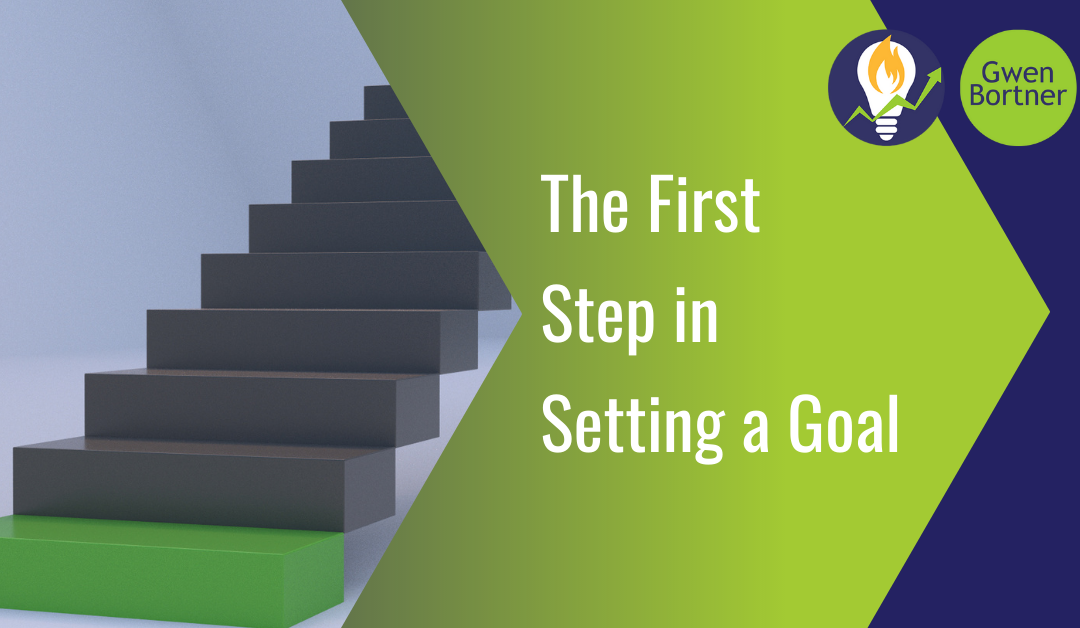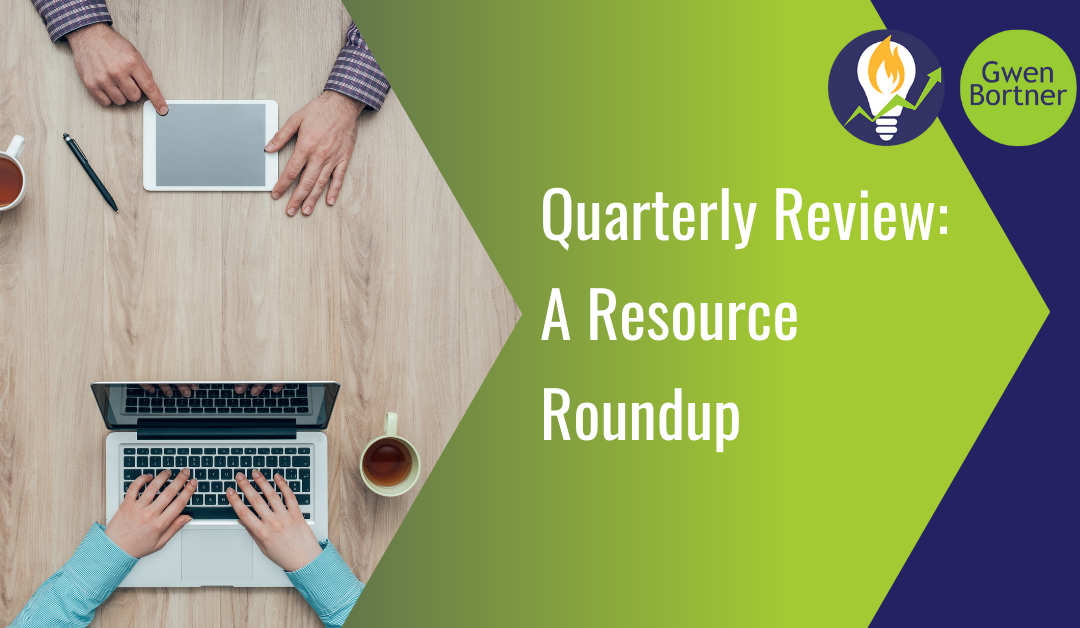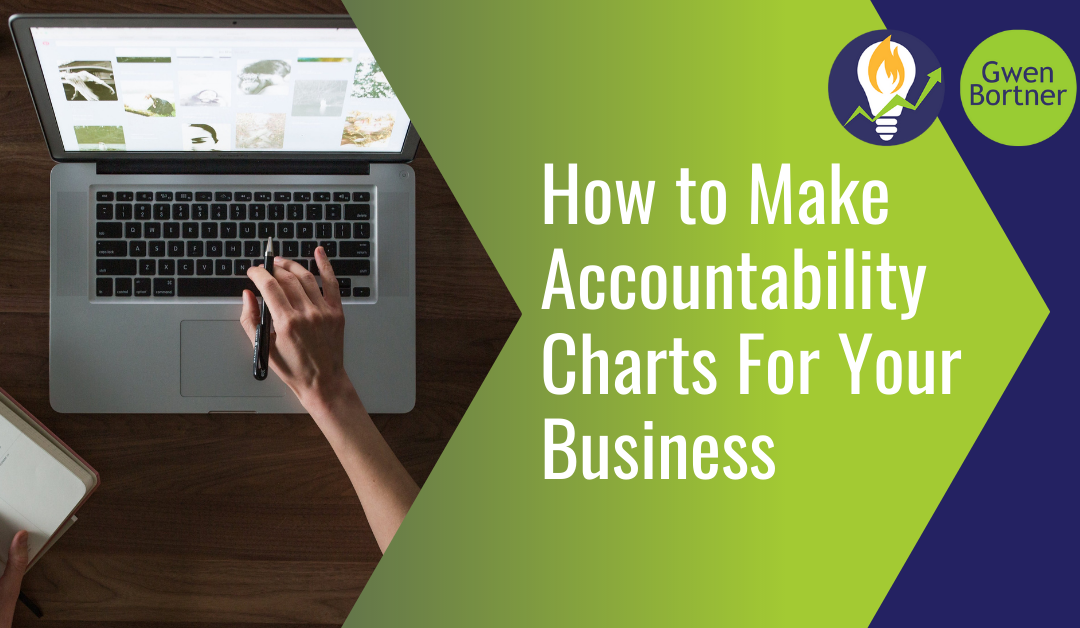
by Gwen Bortner | Leadership, Tips & Tricks
Do you struggle to make decisions for your life or business, because you never know if you’re making the “right” choice? The truth is, you may never know if you made THE “right choice” at the moment, and chances are there’s more than one option that could be right for you, depending on the circumstances. You don’t get to make two choices at once and test them against one another like a science experiment, so you have to just take a deep breath and choose the option that feels the most right and go forward from there.
Previously, I’ve talked about the biggest obstacles that hold you back from making a decision. Now, I want to give you some tips for narrowing down your choices and getting clear on the most right decision for you and your business, no matter what your options are.
How to Make Better Choices
Take Your Time
Things tend to feel very urgent in the moment. There’s a deadline looming, or you’re caught up in the idea that you’re going to miss some significant opportunity if you don’t figure out all the choices right now. In reality, we often create a false sense of urgency when we’re struggling with a decision, and it’s usually not even necessary. Opportunity does knock twice, no matter what people might tell you, and there is always another train to catch. Give yourself the time and mental space you need to make a decision because rushing through the process usually results in negative outcomes.
Eliminate Emotions
Whether you’re a “Star Trek” fan or not, chances are you’re at least a little familiar with the character Spock, who is from the planet Vulcan. The Vulcans are known for having eliminated their emotional responses to every situation through a rigorous system of meditation and a focus on logic. You may not be able to channel your inner Vulcan, but in many cases, an emotional response may be clouding your vision when making a decision. Take a few minutes to journal about the feelings associated with a decision, and it may bring a lot of clarity on why you’re feeling stuck. You shouldn’t discount your emotions entirely – after all, your “gut feeling” may be leading you in the right direction. However, you also don’t want to make decisions based solely on emotions, because they have the power to affect your judgment. Once you can identify what you’re feeling, it gets easier to separate yourself from that emotion and move forward with a decision that is rooted in logic.
Narrow Your Options
In your school days, if you had to take a multiple-choice test, the best strategy was to start by eliminating some of your options. Usually, those types of tests had at least one answer choice that was obviously wrong, if you just took the time to evaluate it. The same strategy can be applied to your decision-making; if you narrow down your options, you can make an easier decision based on what’s left over after you’ve eliminated the choices that are obviously wrong for you and your business.
If you’ve given yourself time and space, you’ve identified your feelings and balanced them with logic, and you’ve narrowed down your options, you can then make a decision knowing that you have thought through your options completely.
As an entrepreneur, you face many choices in all areas of your business every day. Sometimes it’s not clear which part of your business you should start with. Take the GEARS Assessment today to help you identify which area needs your attention before the others.

by Gwen Bortner | Leadership, Tips & Tricks
In my last post, I outlined the biggest obstacles we face when we have to make a tough decision (click here if you haven’t read that one yet). This is also a follow-up to the piece I wrote for APeeling Magazine; if you’d like to read the original piece, click here.
Knowing what’s holding you back from making a big decision is half the battle – but it’s only the first half. It helps to give you clarity and insight, and to move past any emotional or tangible roadblocks you may be facing. Now that you know what’s holding you back, your next task is to actually make the decision, and that’s where it can be tricky.
Today, I’m sharing my top strategies for making decisions when there isn’t a clearly “right” answer. I have used these strategies to set business goals, make decisions that would move my company forward, and even to make challenging personal decisions. Maybe one of these strategies will help you in a similar situation – make sure to bookmark this page so you can come back to it when you’ve got to make a big decision.
Strategies to Help You Make Better Decisions
The Stair-Step Method
This one is for a decision where there are multiple options, and you’re not sure how to choose between so many possibilities. For this strategy, make a list of your options and number them in order. The trick is, instead of trying to look at every possibility all together, you’re going to narrow it down one pair at a time. Look only at choice #1 and choice #2. Pick the best option JUST between those two. Now, put the winner of that contest up against choice #3, and pick the best option only between those two. Repeat this process until you reach the bottom of your list. The winner of the final 1-on-1 contest is the choice you’re going to pick. (Note: you don’t go back through the list and pair them up differently a second time; you get to the bottom and that’s it. Like a sports bracket, there’s one clear winner, and the match-ups don’t get shuffled around after the final game.)
Beyond the Pros and Cons
Chances are, if you’ve been stuck on a decision for any length of time, you’ve probably already tried making a pro/con list, and you still don’t have enough clarity to make the decision. If you’re trying to make a “yes or no” decision, try this strategy instead, which is a twist on the classic pro vs. con list. Divide your paper into four sections and label them like so: pro/want, pro/need, con/want, and con/need. Now, you still brainstorm a list of pros and cons, but you associate each one with something you want or something you need. This can be especially helpful if you’re making a decision that involves doing something difficult that you don’t really want to do, but you know it will move you forward. Breaking the pros and cons up into four different categories can give you clarity on the strongest options between them, and can also help you see if you’re holding yourself back from a decision because it isn’t really what you want to do.
Short vs. Long Term
Use this strategy when you’re choosing between two options that have a lot in common. The similarity between them is likely what’s holding you back from picking one in the first place, so this strategy can really help with that. For each option, make a list of short-term wins and long-term wins if you were to choose that option. When you compare them side-by-side, it can be easier to see the overall benefit of each choice. Do you really need a short-term win in order to get over an immediate hurdle, or will your business benefit overall if you play the long game and wait for a win that takes more time? As you’re evaluating the options, ask yourself: will you be glad you made this choice in 3 months, 6 months, a year? The phrase I use is: Will Tomorrow Me thank Today Me for this decision? This can help you really weigh the options and make the best choice.
If you’re still struggling, you may be putting far too much emphasis on one single decision. In almost every situation, you will have an opportunity to choose differently at some point in the future. There will likely be a cost – of time, money, or opportunity – but there will be a time when you can reverse a decision or take a different path. It’s very rare that a decision is both life-changing AND permanent, but sometimes it can feel that way in the moment.
If you struggle with making decisions, adding these strategies to your toolkit should help you make confident choices to move your business forward. If you still need some help, sometimes the best thing you can do is bring in an outside perspective; someone else who isn’t emotionally attached to the outcome of your decision can bring clarity to the situation that you may not be able to find on your own. If you’d like some help with your decision-making, click here to book a 1-on-1 coaching session with me. Let’s tackle this problem together!

by Gwen Bortner | Leadership, Marketing, Operations
Recently I wrote an article for APeeling Magazine about how to get out of your head when you’re faced with an important decision. Today I’m sharing some similar ideas, but if you’d like to read the original article, click here.
I’ll bet if I asked you to track all the decisions you make in any given week, the number would easily be in the double digits. And that isn’t counting all simple, mundane decisions we make every day. As the CEO of a company, some of the decisions you make are small and simple – there’s an obviously right choice, and it only takes a few minutes of your time. However, there are also those other decisions, the ones that carry more weight or don’t have an obviously right answer, that tend to suck away all of your time and energy for longer than you’d like. If you’ve ever been lost in the weeds of making an important decision, today’s post is for you.
Chances are your decision-making struggle is caused by one or more of the following scenarios:
Outside Pressure
In this situation, you’re struggling to make a decision based on what other people think you should be doing, or your perception of what others will think. If there’s outside pressure pushing you in a certain direction, but your inner voice is telling you that’s not the right solution, it causes conflict. How much easier would life be if we could reject the idea of outside pressure, and just make decisions based on trusting our gut or knowing what we want? Unfortunately, most of us do struggle to meet outside expectations, so this can be a very real problem.
Want vs. Should
You may be struggling because there’s something you know you should do, but you really don’t want to do it. Or vice versa – there’s something you want to do, but it feels like something you shouldn’t be spending your time on. This might be a “suck it up” moment where you really just have to bite the bullet and do the unpleasant thing, even if it isn’t fun or exciting.
Feelings vs. Facts
In this scenario, chances are you know what you need to do, but you’re afraid of hurting someone else’s feelings by making this choice. A similar situation is one where you don’t want to have to inconvenience anyone else to make this decision possible, so you’re afraid to ask them for help. It might help to think about what you’re losing by not making this choice, or what you would lose if you didn’t ask for the help. It can help to have data to help you make the choice that will involve a difficult conversation.
Equal Footing
Sometimes a decision is really hard because it’s either a decision between two good choices or between two bad choices. If you can only choose one thing out of two great options, it can be hard to pick one because you’ve got a fear of missing out on the other option. Conversely, if you’re stuck between a rock and a hard place, neither option feels very appealing. In this case, you probably have to go with what feels the most right (or the least wrong), and just move on.
Alignment with Your Goals
Maybe what’s holding you back from making a decision is that somewhere, your gut is telling you that this decision isn’t really in line with what you need to be working on right now. If you’ve been following a system of setting goals in your business, is this decision going to bring you closer to your current goal, or distract you from it? If you’ve been feeling reluctant but you aren’t sure why, check in with yourself and your goals to see if this decision is truly in alignment with where you should be focusing right now.
Usually, the things that hold you back from making a quick decision are somewhat intertwined. Chances are, you’re actually dealing with more than one of these scenarios at once. The biggest obstacle is identifying what holds you back; once you can do that, it becomes a lot easier to find a solution and move forward.
The next time you’re stuck in the middle of a choice that’s too difficult for you, try identifying what’s holding you back and acknowledging the problem first. Then, make a list of your options so that you can evaluate them and pick the one that’s best for you. As the CEO of your company, you have to hold yourself accountable to making the best decisions that you can, given the tools and resources at your disposal. It isn’t always easy or fun, but it’s necessary if you want to keep moving forward in your business.
If you need some help identifying the greatest area of need in your business, the GEARS assessment can help! Click here to take this free assessment to determine the strengths and weaknesses in your business, so that you can choose the best options to focus your time and energy on for the upcoming quarter.

by Gwen Bortner | Leadership, Tasks & Goals
How many times have you set a goal, personally or professionally, and then felt frustrated when you weren’t able to reach it? Maybe you were really enthusiastic at the beginning, but you lost interest over time. Maybe the goal felt attainable when you set it, but then you just never seemed to get close to actually reaching it.
If you’ve been struggling to reach your goals, chances are it’s because you’re skipping a very important step. Instead of starting the goal-setting process by looking forward to what you hope to reach, instead you need to start by looking back.
My coaching clients and I start our quarterly goal sessions with a thorough, all-day review. After all, you can’t choose where to go next if you haven’t stopped to look around and assess where you are now.
This is the process we follow:
1: Highlights
Start by recording your wins for the prior quarter. No matter how bad you think the last three months were, there are always some wins to be recognized. This sets a positive tone and helps you focus on how to do more of what you and your business does best. Then identify a few key challenges and roadblocks that need to be addressed going forward. Finally, take a few minutes to note any important observations as these can be extremely valuable later in the process.
2: Financial Assessment
Start by looking at your numbers at a higher level than what you do every month, so you don’t get too caught in the weeds. Look at what IS, not what you think might be, using real numbers and real results. Look at sales, customers or clients, income, or whatever other financial metric you think would be valuable to track. Write down where you are for the previous quarter.
3: GEARS Assessment
My coaching clients use my free GEARS assessment to help them get focused on the most important aspects of their business every quarter. We examine goods & services, effective leadership, accountability, resources, and systems together. We also check in on sales and marketing during this time. (Want a free copy of my GEARS assessment to use in your own review? Click here!)
4: Personnel Assessment
In your company, are the right people doing the right job in the right way with the right attitude? If not, then what needs to be fixed or changed? Do you need to let someone go, move someone, find someone new? This may be the most difficult part of the process, especially if you have worked with your people for any length of time, but it’s only through asking ourselves tough questions like these that we are able to move forward.
Time to review & assess.
Once you have completed an extensive review, it’s time to look at what you just outlined: what is your review telling you? Are there areas that stick out as being high-need scenarios? Is there anything that surprises you about the information you gathered? Where should you go next, based on what you’ve found?
Take stock:
- Write down what you have done really well, that you want to continue into the next quarter.
- Now note that area of the highest need for improvement.
- Write down the area that you’re most enthusiastic about working on in the future.
- Write down any big “emergency” problems that need your attention immediately.
Be honest with yourself at this stage, and use the real data from your review to help you take your notes. You’ll probably discover through this process that in some areas, you’re doing better than you thought you were. In others, there may be problems you weren’t aware of until you did this review. That’s why it’s so important to look at actual data and not base your goal-setting off assumptions or memory.

by Gwen Bortner | Leadership, Operations
For my entire life as an entrepreneur, one thing that I really geek out over is quarterly review & planning sessions. I just love the clarity I find in these sessions that helps me take an honest look at where I’ve been, the momentum it builds to set goals for my future, and the security of knowing I have a solid plan to carry me forward for the next three months.
Since this has been one of my favorite topics for years, I’ve written quite a lot of information about it! So today I’m rounding up some of my favorite posts, in the hopes that they might inspire you to find some motivation around your own quarterly planning.
Want some advice and tips for quarterly planning? Check out these posts…
If you want to DIY a quarterly planning process for yourself, these resources should be pretty useful to you in that process. However, if you’re looking for something a little more useful, I’d love to invite you to join me for the Quarterly Tune Up.
The Quarterly Tune Up is my goal-setting program for successful CEOs and entrepreneurs who want to…
- get clear on where they’ve been and face the facts of their current business situation.
- use a customizable system to set goals that are authentic to their own needs and dreams.
- have the support and inspiration that comes from brainstorming with like-minded entrepreneurs and surround themselves with others who totally “get it.”
- hold themselves accountable with as much or as little pressure as they need from an outside source in order to take the action required to achieve their goals.
- carve out time each quarter to work on their business goals and take the regular action required to get to the next level.
Interested in how Quarterly Planning can help you achieve the goals you have for your business? Join us April 6th & 7th, 2022, for the Quarterly Tune-Up!

by Gwen Bortner | Leadership, Operations
Do you ever finish out your work day and wonder where the time went? Do you feel like you’re not really accomplishing very much, even though you’re working all day? Chances are you’re losing crucial time in your business trying to do too many different tasks, or manage too many different people. A solution for this problem is to create an accountability chart for your business.
An accountability chart is like an organizational chart, but with one key difference: an accountability chart focuses on what people are going to be accountable for rather than just listing their job description. I would love to take credit for this idea, but the first time I was exposed to it was in the book Traction by Gino Wickman.
Creating an accountability chart will help you get clarity on who’s doing what, but also help you step back and take accountability only for the tasks you’re supposed to be handling as the CEO. For everything else, your only job is to hold your people accountable for what they owe you.
How to Create an Accountability Chart in Your Business
Step 1: List the tasks that must be completed in order to run your business.
You can group these into different areas, but don’t let yourself get boxed into existing job descriptions or the people who are currently working for you. Think only about the actual tasks that need to go on somebody’s To Do list in order for your business to keep running every day. List them all.
Step 2: Group those tasks into roles.
Think about the most logical way to combine those tasks into roles, or job descriptions. No matter how you’ve done it in the past, this is a chance to invent the best practices that will carry your business forward. If someone is doing Task A, which other tasks are the most logical for them to take on as part of their role in your company?
Step 3: Define the accountability for each role.
What is the deliverable outcome for each job description? What will that person need to be accountable for producing as they complete those tasks? You may also want to use this step to put a time frame on this accountability: how frequently do these tasks need to be completed for maximum results? Is there any flexibility on this, depending on the person you eventually hire to fill this role?
Step 4: Determine the number of hours or people needed to fill this role.
It’s only natural that the roles you have in your business will grow as your business does, but think about right now: how many hours per day or week would it take someone to fulfill the duties of each role? Chances are, when you’re just starting out, one person (maybe even you) can take on several roles at once. It’s still important to define them as separate roles, though, so that as the business grows that person can pass off some roles to other people and fill more of their time doing fewer jobs.
Step 5: What is the appropriate accountability structure?
This is where the accountability chart starts to look more like an organizational chart. A Chief Financial Officer role may also be accountable for ensuring the roles of Bookkeeping and Payroll Tax Preparation are being fulfilled. And right now, those roles all may be the same person. However, as your business grows, those roles may be taken over by other people. Keep in mind, we are designing for the future, not just the present.
Step 6: Share as needed.
Everyone who works for you doesn’t need a detailed job description for every other person in the business, but they do need at least a baseline of information. If I’m your employee, I need to know my own job in pretty strong detail so that I make sure to complete my tasks and maintain the things I’m accountable for. I also need to know who I report to with questions, problems, and results. For everyone else in the business, I just need to have a basic idea of their role so that if an item comes across my desk that should really be theirs, I know where to forward it.
As you develop your chart, remember that accountability is key. You don’t want “too many cooks in the kitchen,” or too many folks who are accountable for the same thing. The higher up you go on your chart, the fewer people should be accountable for each outcome. Fundamentally each role should be able to be summarized by 3 – 5 bullet points.
It may seem unnecessary if you’re still at the stage of business where you’re doing most of the work, or you only have 1 or 2 employees or contractors. However, having clear roles now means it’s easier to grow your business down the road, because you can hire people according to their strengths. If one person is balancing multiple roles right now, they can eventually give away the ones that aren’t firmly in their wheelhouse in order to focus on the ones that are.
If you need some help identifying the roles in your business and holding your team accountable for their tasks, come join us in the Operations Engine. You’ll get support from other CEOs like yourself, with guidance and advice from me every step of the way. Click here to schedule a call for more information.
(PS: if you’d like to dig deeper into this topic, I really recommend the book Traction: Get a Grip on Your Business, by Gino Wickman. It has some really practical advice for how to get a handle on your business operations.)







